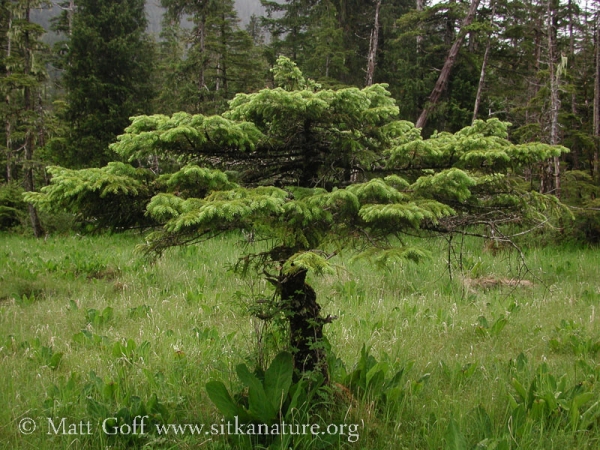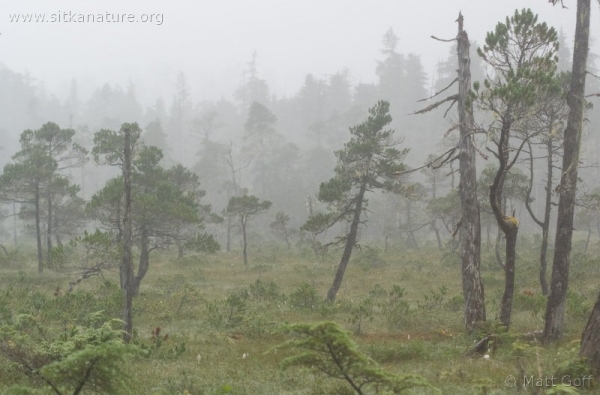Stunted Sitka Spruce – sháchk ka.aasí?
Disclaimer: While I have a reasonably broad knowledge of the natural history of Southeast Alaska (especially birds and plants), I am only an intermediate Tlingit language learner. This page has been created as part of my learning process; I welcome comments and corrections, and in posting this publicly I hope that it can also be of some help to other learners. For additional resources, see tlingitlanguage.com
Dictionary of Tlingit: sháchk ka.aasí – stunted tree in swamp; jackpine, swamp spruce
Tlingit Noun Dictionary: sháchk ka.aasí – swamp tree
Interior Tlingit Noun Dictionary: – Not included
Most of the widespread conifer trees in Southeaset Alaska at least occasionally show up in muskegs (including bogs and fens or wet meadows) in stunted form. The most common one is Pine (Pinus contorta), but Yellow Cedar (Chamaecyparis nootkatensis), Western Hemlock (Tsuga heterophylla), and Mountain Hemlock (Tsuga mertensiana) can also regularly be found there. I usually see stunted Sitka Spruces (Picea sitchensis) in fens or wet meadows rather than bogs. It is not clear to me whether the term sháchk ka.aasí refers generically to any tree growing in a muskeg, meadow, and/or wetland, or if it is restricted to only certain species.
sháchk ka.aasí seems to be made up of some fairly clear components:
- sháchk swamp or meadow
- ka- horizontal surface; on
- aas tree (especially conifer)
- -i (ending with grammatical meaning I don’t recall at the moment)
Muskeg View

